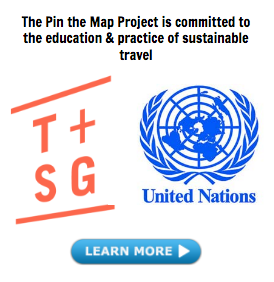In my new role as Travel Editor for The Culture Trip, I am tasked with writing feature stories on a weekly basis of my choosing. What this means is that each week, I am scouring the internet for potential story ideas and angles that could make for a great feature. This is the fruit of a labor I love; and while sometimes a story idea is easy; other times I am digging for something more unique. This can apply to blogging too, where we are constantly brainstorming new post ideas and trying to come up with something more exciting than the next post. Here, I share some of my top resources for finding ideas that inspire a story.
1. Find Ideas on Bored Panda
If you haven’t heard of it, Bored Panda , is a user-generated website where people from all over the world pen articles. Some treat Bored Panda like a personal blog, others use it as a promotional tool to highlight a project they’re working on. Every now and then, there is a great post on Bored Panda that shares an initiative, idea or cause that could make for a great story.
2. Use Press Releases from the Associated Press
Now, I’m sure most bloggers aren’t perusing press releases on Associated Press (this is more the labor of love for journalists), but if you’re looking for timely stories, you can check out AP press releases. AP is a good resource if you want to give your blog more of an ‘on trend’ feel and cover what is the latest stories.
3. Scan the Forums of Reddit
Reddit is like the Wild West of the internet; it’s an online forum where everything from news to sex is openly discussed and shared. For journalists, the Today I Learned thread and AMA thread are good resources for finding good story leads or connecting with people who are willing to be interviewed.
4. Find the Latest Trends on Skift
Skift can be thought of as the CNN of travel. The website is the top resource for anything new or notable within the travel industry - from trends to products to business news. Skift is a great resource for anyone hoping to write a story about what’s new in the world of travel, to share with their readers.
5. Get Story Ideas from Twitter
Twitter is an old faithful for writers. As a journalist, I use Twitter to connect with people, find story ideas and crowdsource for articles. The key to using Twitter is to make sure you’re following the right people. If you’re one of those Twitter users who follows everyone, it’s time to comb through who you follow and clean it up. Make sure to follow top news outlets, journalists, writers and bloggers you admire. You can check out who I follow here.
6. Find Experts on HARO
The nature of blog posts are often quick, personal and opinionated. More often than not, you won’t be looking for experts to offer opinions on your posts; but should you need one then HARO is the tool for you. HARO (Help A Reporter Out) is a great site that connects writers with experts across various fields. Should you decide to add a little expertise to your next great blog post, then make sure to use HARO.
7. Get Inspiration from VICE
VICE - in my opinion at least - sets the standard for journalism today. VICE has helped pioneer narrative journalism, in which reporters cover global issues while inserting their own emotion into the text. The result? Heart felt writing that reads A LOT smoother than dry, CNN reports. Don’t ask me how, but VICE gains unprecedented access for their stories; so I like to look at their articles for inspiration.
8. Don’t Ignore the Best
It may seem counteractive to look towards big news outlets for story ideas. You may wonder what’s the point of scanning The New York Times for inspiration if the story has already been written and written well. The answer is to look at these stories and find a new angle. For example, I was reading a fantastic article in Vanity Fair about the world of “sugaring” (which if you must know is about a young woman who trades sex for money with wealthy men). The article was written beautifully, but while reading it I wondered if such a trend existed in travel; whether people swapped sex for free trips. Ends up the answer is yes! This made for a great story I wrote for The Culture Trip. The takeaway is this: just because a story has been written up doesn’t mean you can’t find inspiration to explore that topic in an entirely new way.
9. Pull from Personal Experience
Of course, the best way to find a story is to stumble across it. Whether you’re traveling, in your hometown or reading a magazine - stories can find you anywhere. When it comes to sourcing story ideas, the key is to look mostly at user-generated sites. Sites like Bored Panda or Reddit where people are sharing under-the-radar news and projects that might be deserving of attention. Remember: never steal a story idea! Instead, you can interview people doing interesting things or find unique angles to explore. Although these are tricks of journalists, these sites can prove amazing for bloggers looking to come up with something a little more unique than ’10 packing tips.’
How do you get your story ideas? Share them below!



Yvonne Lynn says
Great ideas! I’ve often wondered if I’d be cheating if I took someone’s article and wrote it from my viewpoint. (Must stop overanalyzing.) Not cheating-being creative! Thanks!
Not at all! As long as you’re not directly copying and pasting content, then there is nothing wrong with drawing inspiration from other people’s posts and finding your own angle on the subject!